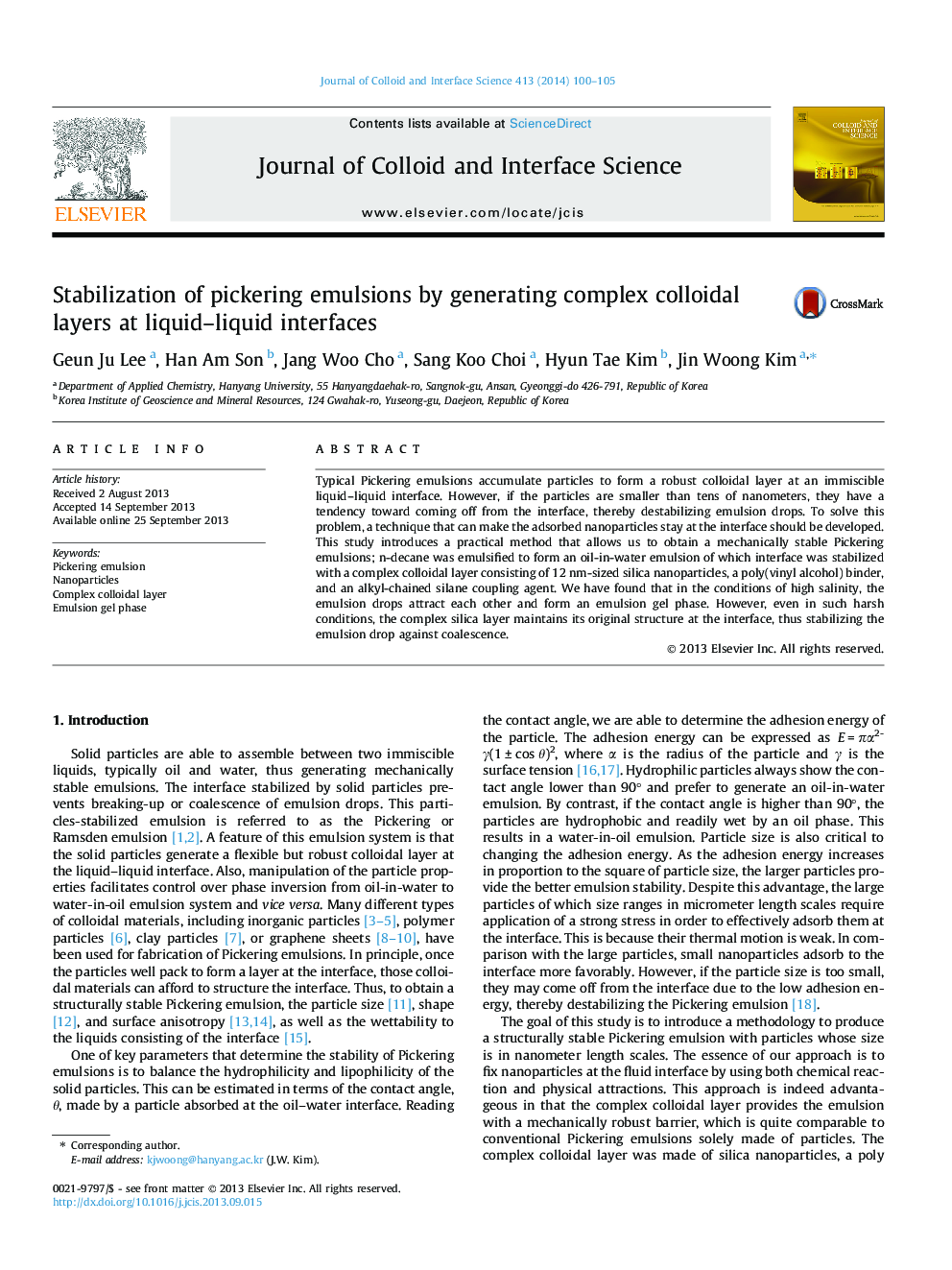| Article ID | Journal | Published Year | Pages | File Type |
|---|---|---|---|---|
| 607501 | Journal of Colloid and Interface Science | 2014 | 6 Pages |
•A practical method to produce a mechanically stable Pickering emulsion has been introduced.•The Pickering emulsion has been made of a complex layer of silica nanoparticles and chemical binders.•The emulsion drops attract each other and form an emulsion gel phase in salinity conditions.•Formation of the complex silica layer is critical to stabilizing the emulsion drop against coalescence.
Typical Pickering emulsions accumulate particles to form a robust colloidal layer at an immiscible liquid–liquid interface. However, if the particles are smaller than tens of nanometers, they have a tendency toward coming off from the interface, thereby destabilizing emulsion drops. To solve this problem, a technique that can make the adsorbed nanoparticles stay at the interface should be developed. This study introduces a practical method that allows us to obtain a mechanically stable Pickering emulsions; n-decane was emulsified to form an oil-in-water emulsion of which interface was stabilized with a complex colloidal layer consisting of 12 nm-sized silica nanoparticles, a poly(vinyl alcohol) binder, and an alkyl-chained silane coupling agent. We have found that in the conditions of high salinity, the emulsion drops attract each other and form an emulsion gel phase. However, even in such harsh conditions, the complex silica layer maintains its original structure at the interface, thus stabilizing the emulsion drop against coalescence.
Graphical abstractFigure optionsDownload full-size imageDownload high-quality image (84 K)Download as PowerPoint slide
